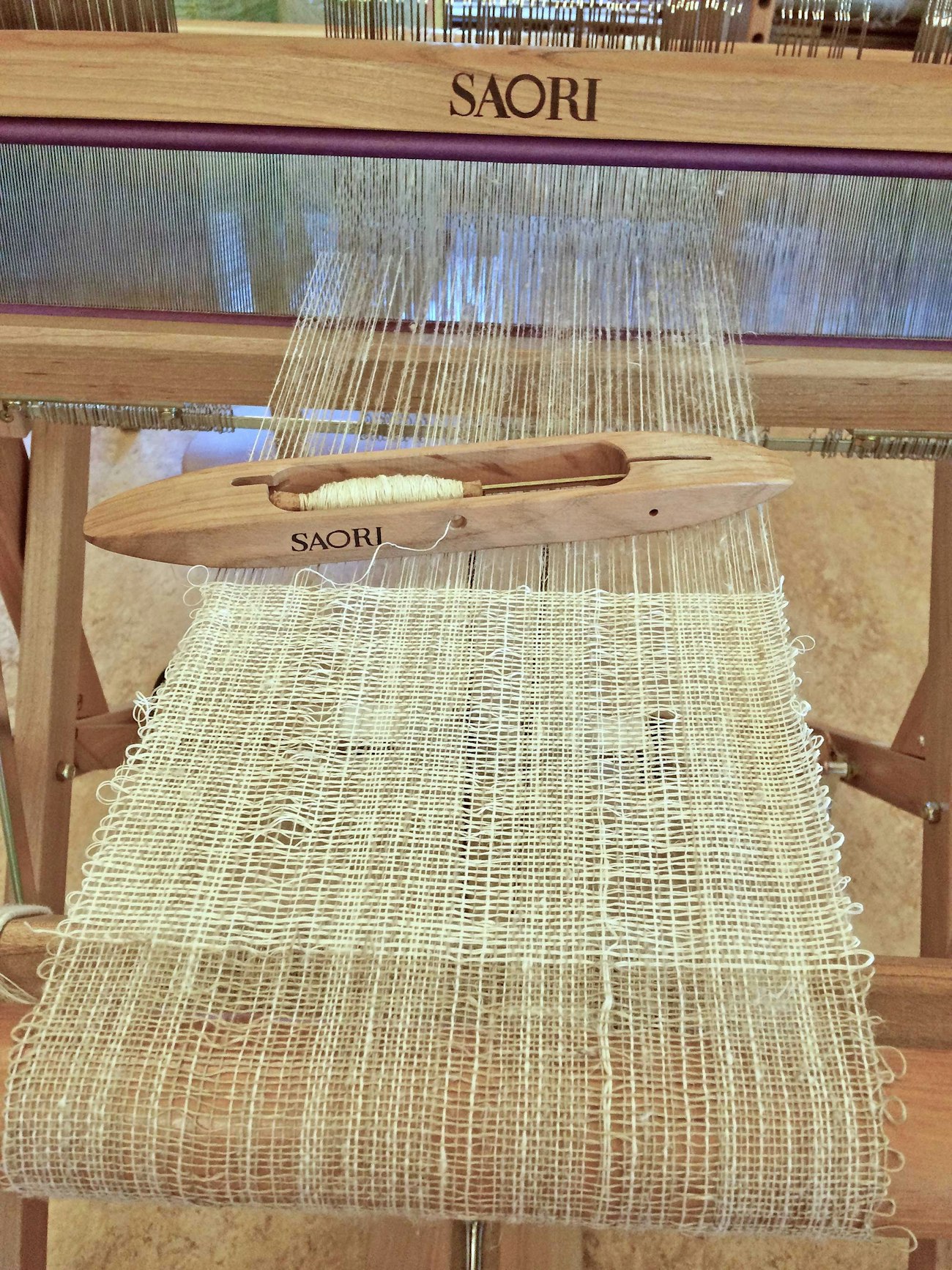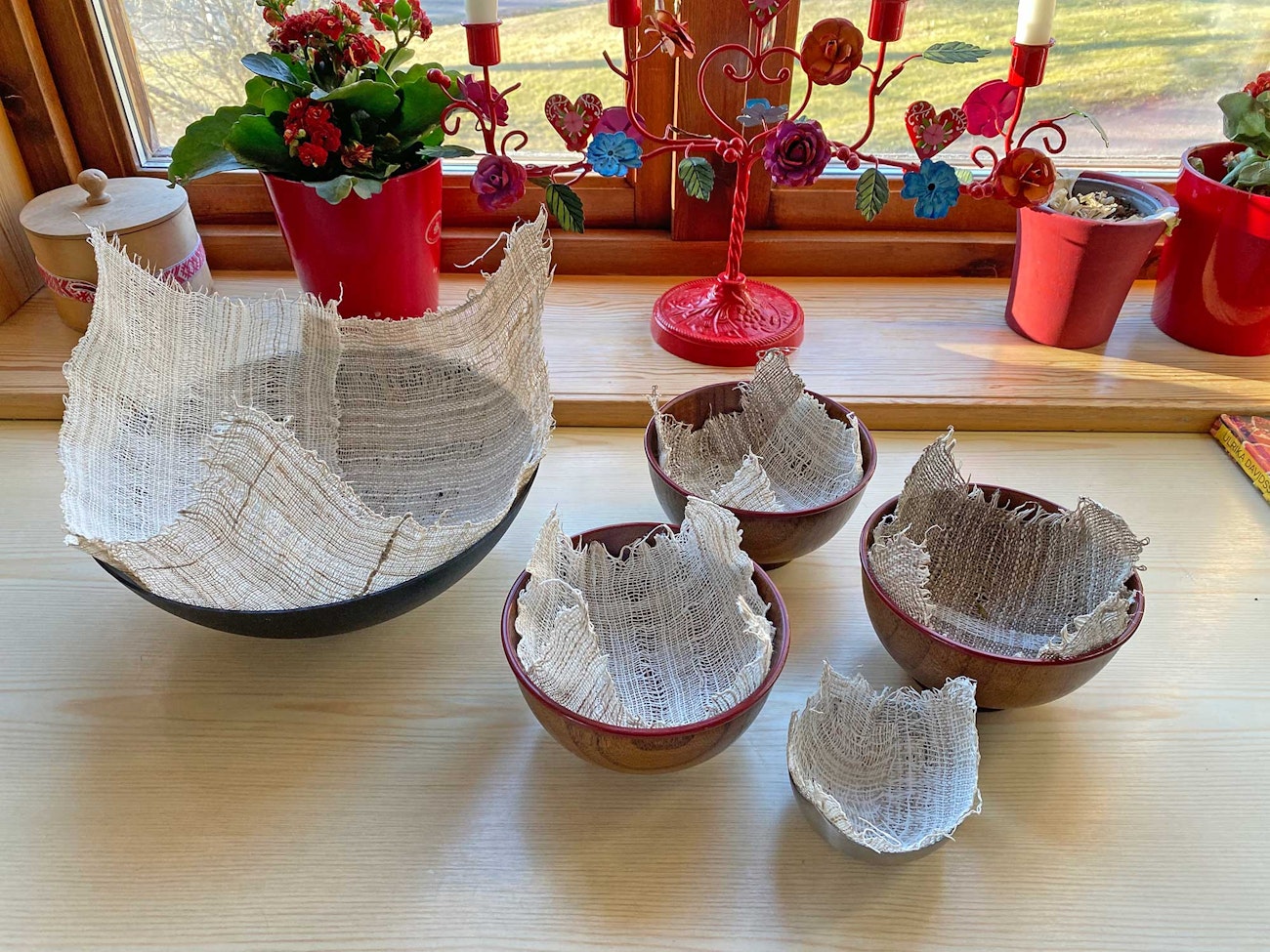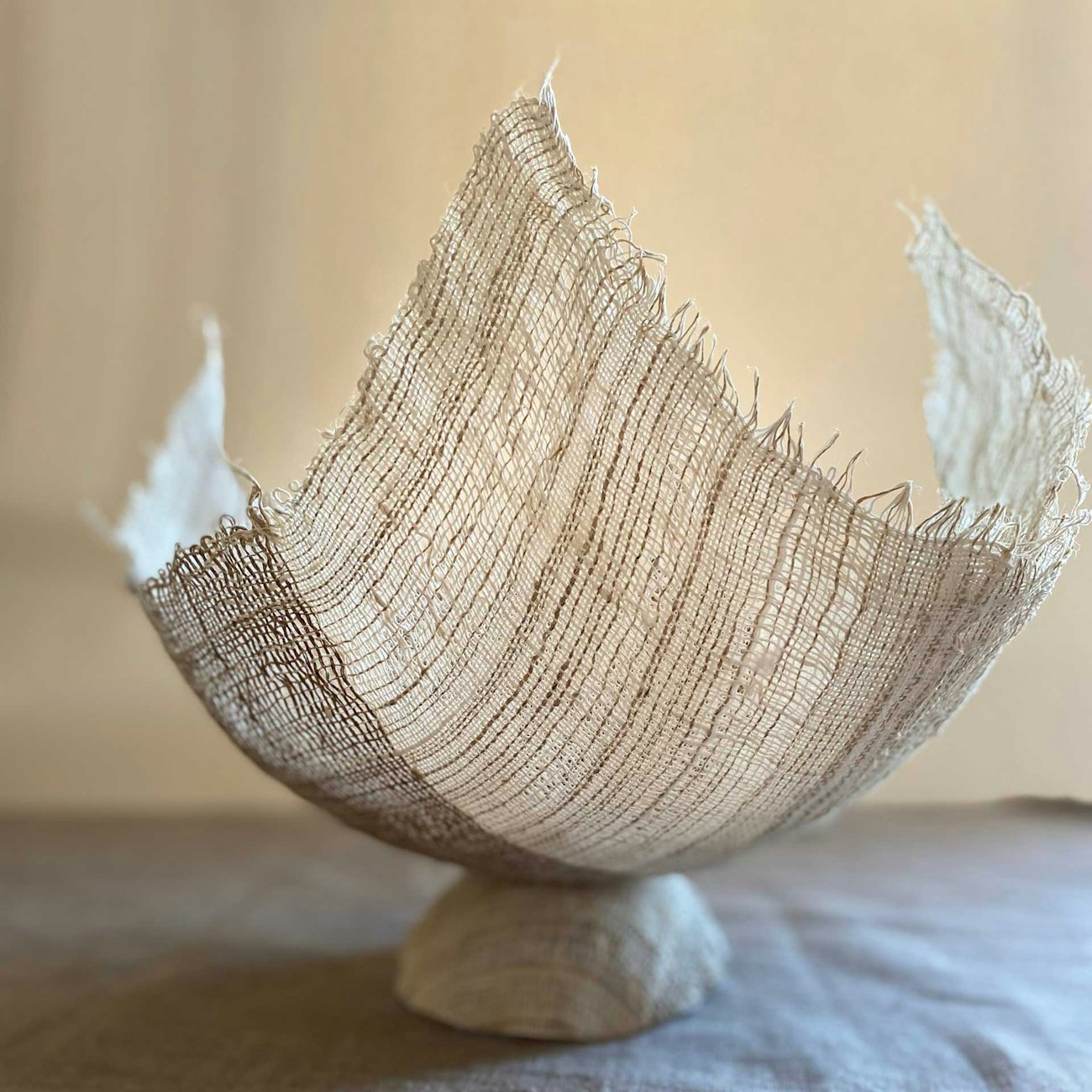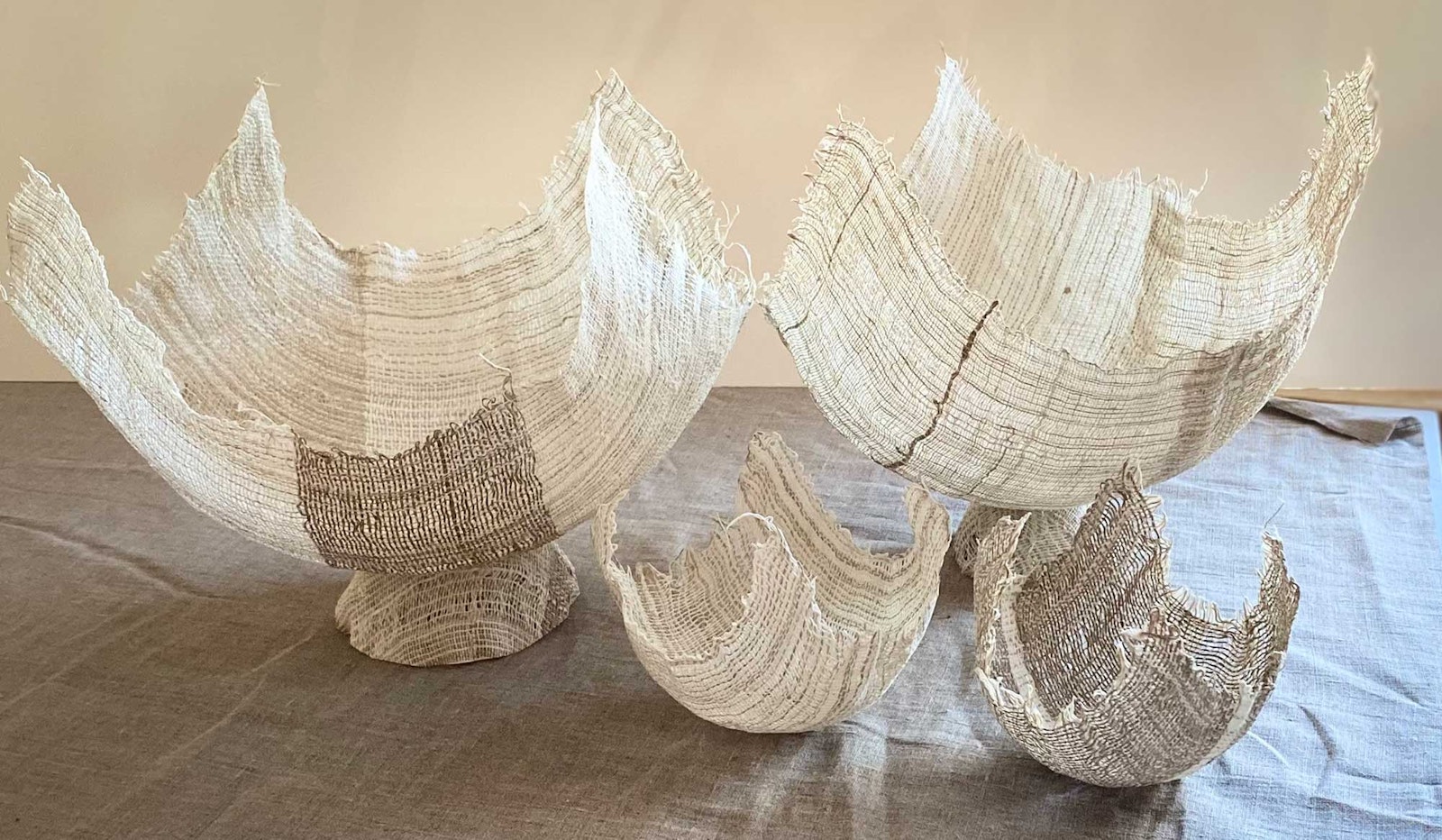Fiber Old flax stricks from my village, some of it grown as far back as the 1920s; gifted linen thread from handweavers who have passed away; and flax that I have grown myself.
Wheel Hjulbäck antique wheels from my neighboring village.
Spinning method Wet-spun long-line flax from distaff.
Finished size Diameter about 12" (30 cm) square.
My fascination with fiber lies in its dimensional properties as I transform fiber into yarn, weave it to become two-dimensional, and then give it shape as a three-dimensional garment. This piece is my first attempt to make a freestanding three-dimensional weaving.
I chose linen for this project because of its stiffness and rigidity. Linen has a lot of variation depending on soil, retting process, preparation, and spinning. I have so much antique and vintage Swedish linen thread, and I was curious to see if I could use it in combination with my own homegrown flax. This is the result of trying to weave different qualities and gauges of linen on a narrow warp of linen singles.
Get a closer look! Click on any image in the gallery below to open it in full-screen mode.
Clockwise from top left: The author sowing flax seeds into the soil; after harvesting her one square meter of flax; close-up of the distaff used to draft long-line flax; one of the antique Hjulbäck wheels in the author's collection.
I grew and prepared my own flax as part of a project called “1 KVM LIN,” or 1 Square Meter of Flax. This Swedish Heritage Association initiative started with 700 growers in south Sweden and expanded to over 6,000 growers around Sweden in 2021. The growing and preparation of my own flax from seeds to thread was done with antique tools that I collect and repair. Retting, breaking, scutching, and hackling must be done to extract the flax fibers from the plant and prepare them for spinning. I wet-spun my singles using water or flax goo (boiled flax-seed extract). Give it a try: Boil 1 tablespoon of seeds with about 8 ounces of water and let it simmer for a few minutes. The consistency should resemble runny snot. Keeping a bit of this on my fingers as I allow twist into the fibers smooths the yarn’s surface.
 Kirsi wove her handspun singles and small quills of old linen yarn from various sources, starting with a narrow warp of single linen yarn to test its durability.
Kirsi wove her handspun singles and small quills of old linen yarn from various sources, starting with a narrow warp of single linen yarn to test its durability.
I mostly make garments, so I’m already thinking in three dimensions, but a garment follows a body shape, and in this project, there is no support for the shape. After spinning the yarn, I tried several approaches before finally getting the effect I wanted. In the end, I wove an open sett to give the fabric a transparent quality and allow the individual threads to be shifted to shape the bowl. The threads are held in place with starch. While I love every part of making, seeing my bowl actually standing and holding its own weight was exhilarating. The challenge is to work with the material and not against it, while still exploring its boundaries.
 Kirsi says she is thrilled to see how beautifully her finished bowls enhance the fibers, drawing the viewer in closer to see and touch them.
Kirsi says she is thrilled to see how beautifully her finished bowls enhance the fibers, drawing the viewer in closer to see and touch them.
Last summer, my bowls were accepted to a juried show about contemporary linen weaving in the region, arranged by the Dalarna Heritage Association. It was so special to see my work displayed in a glass casing!
 Kirsi’s favorite part of the process? Seeing her bowl standing on its own.
Kirsi’s favorite part of the process? Seeing her bowl standing on its own.
My interest in fiber arts is driven by curiosity and the potential for transformation: from individual fibers to yarn to cloth to garment. The fourth dimension in creating is time; we are all familiar with the question, “How long did it take you to make this?”
And the answer is, “My lifetime.”
This article was first published in Spin Off Winter 2024.
Also, remember that if you are an active subscriber to Spin Off magazine, you have unlimited access to previous issues, including Winter 2024. See our help center for the step-by-step process on how to access them.
Kirsi Manni was born into fiber, literally growing up under her mother’s and grandmother’s looms and sewing machine tables. At university, she studied math, textiles, and handweaving and graduated with a bachelor’s degree in education for secondary school. Today, after 20 years in the education system, Kirsi has her own studio and workshop. She does restoration work for churches, museums, and private customers and gives lectures and teaches weaving classes.
Have a finished object to share? Tell us about it! Contact us via our email address to submit your project.

